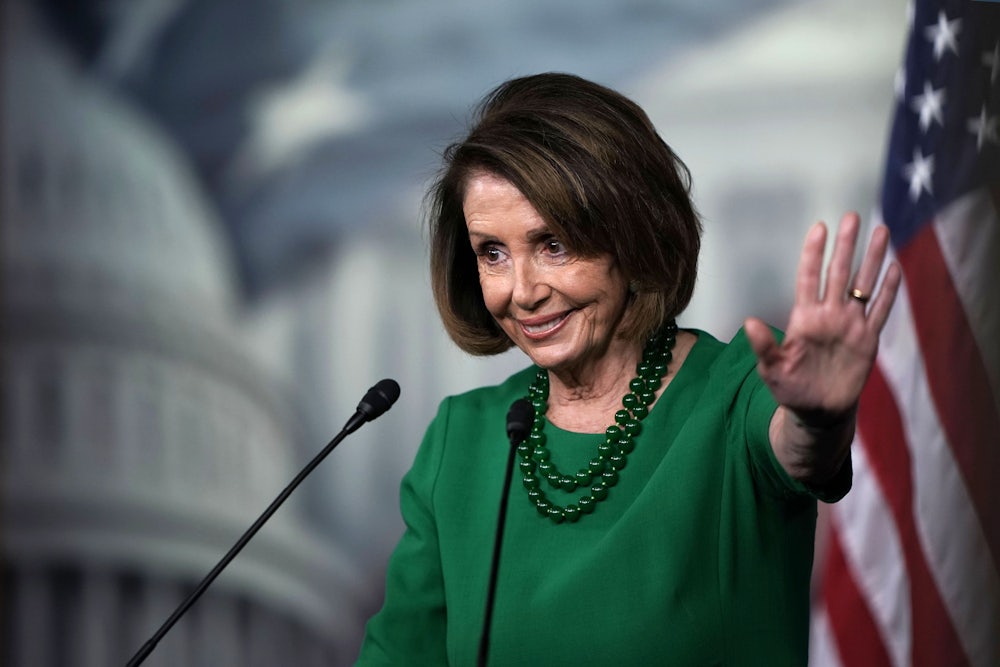The Congressional Progressive Caucus has had a surprisingly productive and savvy post-election session. Co-chairs Pramila Jayapal of Washington and Mark Pocan of Wisconsin cut a deal with presumptive House Speaker Nancy Pelosi to increase the number of CPC members on five key committees, through which nearly all major domestic policy flows. Member Barbara Lee was given a new House leadership position, co-chairing the panel that doles out those committee assignments.
Progressives also convinced leadership to scrap a House rule, implemented by Republicans in 1994, requiring a super-majority vote for raising taxes on the majority of wage-earners, making priorities like Medicare for All or tuition-free college harder to finance. And they are fighting to establish a Select Committee on climate change that would develop “Green New Deal” legislation.
All of these steps are preparatory in nature. Progressive legislation won’t get President Trump’s signature, but eliminating hurdles to such legislation will matter in the future, if and when a more like-minded president takes over. Progressives are finally playing a long game, thinking strategically about how to maximize power once they have it.
But these advances did not come easy, nor are they ensured to stick. There’s also one major hurdle left to topple: the “pay as you go” rule, commonly known as “pay-go,” which demands that all new spending get offset with budget cuts or tax increases. Progressive critics argue that this creates an unlevel playing field, where Republicans blow giant holes in the tax code, as they did last year, while Democrats must pay fealty to the deficit. These critics are now mounting a fight to unshackle a future activist government.
Earlier this year, amid “internal divisions” in the party, Pelosi signaled her intention to put pay-go into the rules package. “Democrats are committed to pay-as-you-go,” her spokesman, Drew Hammill, said in June. Former Progressive Caucus chair Raúl Grijalva (D-AZ) responded by calling pay-go “an absurd idea,” saying it’s “irresponsible to try to tie up Congress’s ability to respond to economic downturns or, in the current discussion, to slash programs.”
Pelosi has defended and expanded pay-go for over a decade. She first instituted it as a standing rule the day she received the speaker’s gavel in 2007, and was a driving force in passing the Statutory Pay-As-You-Go Act in 2010, signed by Barack Obama. That law puts the burden on the president to enforce across-the-board cuts if Congress violates pay-go. The prospect of any president implementing an unpopular hatchet job like that is remote. So the House rule looms large in this fight by constraining new spending at its source.
Obviously, Pelosi and her allies on pay-go consider the rule good politics, allowing them to rebut charges about “tax and spend” liberals by insisting that every new program is fully paid for. If anybody actually cared about the deficit, instead of habitually using it as a weapon to rein in the opposition party, maybe that logic would be compelling. But even if the politics make sense, the rule leads to bad policy, as Josh Bivens of the Economic Policy Institute, which is quite close to House progressives, argues in a paper last week.
As Bivens explains, the Affordable Care Act’s subsidies were artificially made smaller because of pay-go rules. Democrats also created a long implementation period for Obamacare, with four years between signing and the effective date of the exchanges. That allowed adherence to pay-go within the ten-year budget window. But it also denied benefits to the public for an exceedingly long period, during which Republicans swept into virtually all levels of government.
A pay-go rule is even more dangerous in a time of economic downturn, when government needs to be the spender of last resort. “It is terrible economics to view federal budget deficits as always and everywhere bad,” Bivens writes, and that’s especially true when the economy is struggling. Democrats, he notes, were obsessed with President George W. Bush “running up the nation’s credit card” on wars and tax cuts when the real focus should have been on deregulation that was weakening financial markets.
When the Great Recession hit, the stimulus package was deliberately targeted lower than what was required to fix the economy. In 2010, Obama pivoted toward deficit reduction, and fiscal policy started to go negative in the middle of that year, while Democrats still controlled Congress and unemployment was still unforgivably high. Public sector jobs fell every year from 2009 to 2011. Bivens highlights a remarkable stat: “If this public spending following the Great Recession had followed the average path of the recoveries of the 1980s, 1990s, and early 2000s, a full recovery with unemployment around 4 percent would have been achieved by 2013.”
Pay-go can always be waived—as it was for the stimulus, and for the Republican tax cuts. But it creates an environment where legislation must be mindful of deficits first and helping people second. Bivens’s paper and other unconventional economic thinkers like Stephanie Kelton have taken their mission as re-educating Capitol Hill that the goals of fiscal policy must be broader than the budget deficit.
The Trump tax cuts actually provide a wide range of “pay-fors” that could be used to fulfill pay-go—just reverse the gifts to corporations and the wealthy to pay for programs. But it still puts Democrats in a box, having to propose tax increases up front, which Republicans gleefully broadcast. Republicans get to play Santa Claus, able to promise endless tax cuts and endless spending, while Democrats pray that voters see them as the party of fiscal responsibility.
